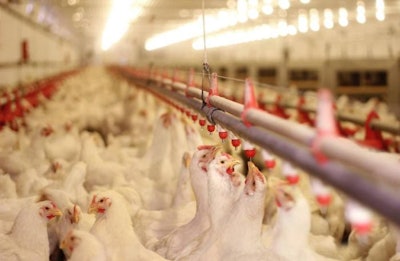
Consumer-led disruptions are the ‘new normal’ for the poultry business. What are these consumer-led disruptions? They are the shifts in consumer attitudes that are driving demand toward natural, antibiotic-free, free-range, non-GMO, organic products and more.
Consumers care about an evolving set of values that drive their purchasing behavior. These include such things as how poultry producers treat their workers and evolving issues related to their social responsibility and that of their supplies and customers.
Today, about half of U.S. consumers say they pay more attention to these evolving drivers than to the traditional drivers like taste, price and convenience. Poultry producers have to develop strategy to cope with this new market reality – what is being called the “new normal.”
Consumer values shifting, impacting poultry worldwide
Jim Sumner, president of the USA Poultry & Egg Export Council (USAPEEC), and the president of the International Poultry Council (IPC), recently said this new normalcy is a worldwide challenge. “The IPC just submitted testimony to CODEX [Alimentarius] concerning new regulations and standards for the use of antibiotics [in poultry] and the development of antibiotic resistance. So if [the poultry industry is] not a part of that decision making process we are going to be the victim of that decision-making process.”
Sumner identified other poultry business disruptors, including the growing demand for cage-free eggs and slow-growing broilers. He said, “We can’t turn our backs on these issues for a moment.”
He is right, of course, and what’s more, poultry producers need to better understand the evolving drivers and integrate this understanding into an overall business strategy. Moreover, poultry producers have to find ways of building trust with consumers – even at a time when there is growing general consumer distrust of business.

The drivers in which consumers make chicken purchasing decisions continue to evolve.
Realistic strategies to deal with market disruption
In an effort to identify ways of addressing these shifting consumer food values, the Food Marketing Institute and Grocery Manufacturers Association collaborated with Deloitte Consulting in a survey last year of 5,000 consumers and 40 companies across retailers, food manufacturers, ingredient suppliers and agricultural producers.
Deloitte made recommendations for the food industry based on the survey results. One finding was that market success will be determined by building purpose-driven competitive advantages. The following questions may help in framing a realistic strategy:
- How can current poultry business strategies and production be re-framed to align with the “new normal” for consumers?
- How can consumers be engaged in a genuine and two-way dialogue about consumer priorities, even as they evolve?
The objective isn’t necessarily to make your poultry business compliant with the evolving drivers but to make it viable in the ‘new normal’ marketplace. Some firms may even adopt a course counter to some, or all, of the new drivers. The key is to plot a values-driven strategy that is authentic with consumers in a business environment where a growing number of them think and behave based on the ‘new normal’ drivers.
“With rapidly shifting consumer value drivers, manufacturers and retailers should determine where they reside in the new consumer value equation,” Deloitte recommended. “With an increasing number of consumers redefining their 'new normal,' market dynamics will likely continue to change with broad implications creating both new challenges and new opportunities.”
Consumer trust and poultry’s corporate transparency
One potentially uncomfortable reality for poultry businesses is that consumers are in the driver’s seat in communicating and shaping these market disruptions. The Deloitte report explained, “Social media and digital channel use have democratized information is such a way to empower consumers and disrupt the historical reliance of manufacturers and retailers on traditional communications and marketing. While consumers don’t always get accurate information through these channels, one thing is certain – the influence of these channels is strong.”
There is, however, opportunity in the market disruption. Nearly all the food industry executives interviewed agreed that transparency is a top priority for the industry – and it can powerfully influence consumers.
The Deloitte report concluded, “One of the biggest benefits of transparency is that it can play a major role in creating or restoring a sense of trust among consumers. This is especially important in today’s environment, where consumers are significantly concerned that manufacturers would put profit over transparency and are distrustful of large food companies.”

Transparency is of growing concern for today's poultry consumers, according to The Deloitte Food Value Equation Survey.
Do you see threat or opportunity in the ‘new normal’?
Finally, there is opportunity with consumers for both big and small poultry companies. As the report observes, larger competitors will adjust to fulfill new, unique value propositions. Smaller (sometimes newer) companies will leverage new technologies, third-party relationships, and improved engagement to earn consumer trust and to compete.
Every market disruption creates winners and losers. The poultry businesses that win in this one will perceive the disruption as opportunity and seize it.

















